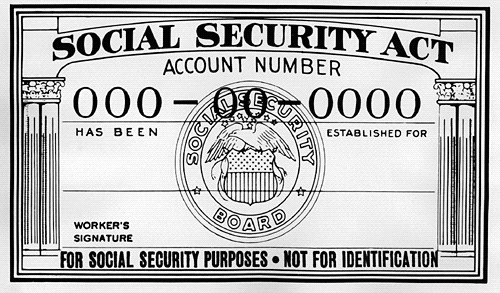In the final presidential debate on Wednesday, a few things stood out. Donald Trump again equivocated when asked if he’d honor the result of the election, and in calling Hillary Clinton a “nasty woman,” he helped ensure the result would tilt in her favor. Beyond all the bluster, though, the fiscal policy discussion had a decidedly right-wing slant. Moderator Chris Wallace raised numerous concerns about the national debt and the cost of various social programs, one of which stood out in particular — Wallace put forth that “Social Security is going to run out of money in the 2030s,” a predicament that he claimed neither candidate’s budget proposal would solve. For many working Americans who watched the debate, this might have come as an alarming surprise: Without Social Security to cushion them, would they have financial security in retirement? Should they start to worry about the future?
Wallace isn’t alone. Among many politicians on both sides of the aisle, a consensus exists that the current iteration of Social Security is fatally underfunded and in dire need of reform. On the one hand, Speaker of the House Paul Ryan has longed to cut Social Security for virtually his entire legislative career, and although Trump still maintains the populist, pro-Social Security facade, he’d likely align with his party in the Oval Office. On the other hand, Clinton has also publicly defended Social Security — her campaign’s website calls it “America at its best” — while privately scheming to undermine it: In several speeches that WikiLeaks recently released, she endorsed the disastrous Simpson-Bowles deficit reduction plan, which would have gashed Social Security benefits if enacted. However, this elite consensus is far from justified. The problems facing Social Security are in many cases exaggerated; in fact, the best course of action is strengthening the program, to sustain its run of success.
First, a brief history lesson. After the stock market crash of 1929, many Americans lost their retirement savings and had nothing to fall back on. With scores of elderly people living in destitution, former President Franklin Delano Roosevelt had to alleviate things, so he signed into law the Social Security Act in 1935. The legislation gave retirees a monthly stipend, underwritten by a small deduction from workers’ paychecks, to keep them financially stable. Eight decades later, it’s worked spectacularly: As Social Security benefits have expanded fairly consistently, the elderly poverty rate has decreased. These days, Social Security rescues more than 20 million people from poverty, making it perhaps the most fruitful anti-poverty program in American history.
So what trouble arises with Social Security? The core complaint, which Wallace propagated during the debate, is that demographic changes will cause the program to run out of money completely. Over the next few decades, the elderly population will balloon due to baby boomers hitting retirement age and life expectancy rising. But this doesn’t spell the end of Social Security, which currently has $2.79 trillion saved in a trust fund to account for population growth. Even when that goes away — which will probably happen in the 2030s, as Wallace asserted — the program will stay up and running, thanks to workers’ continued contributions to the fund. While the government may have to reduce payouts by 20 percent or so, Social Security will still exist and will still help the elderly keep their heads above water.
With that said, cutting benefits isn’t an ideal solution — as mentioned previously, Social Security is the only thing standing between 20 million people and poverty. To account for the spike in retirees, the best policy response would be to re-raise taxes on the rich. The same year that he created Social Security, Roosevelt initiated large-scale tax increases, meaning that, in each year from 1936 to 1980, the top marginal tax rate was at least 70 percent. Then Reaganomics came along, slashing taxes on the highest earners dramatically: In 2013, the top marginal tax rate sat at 39.6 percent. A modest uptick on taxes paid by the most affluent Americans would give the federal government tens of billions of dollars to play around with, which could eliminate all worries over Social Security for decades to come.
Of course, this approach wouldn’t sit well with the rich themselves, which is why people such as billionaire Pete Peterson have led the charge to cut Social Security. Luckily, his hilariously pathetic student groups and flash mobs have proven ineffective, as the American people — across partisan and ideological lines — persistently approve of Social Security. In March, Pew Research Center surveyed supporters of the five remaining presidential candidates (Trump and Clinton, plus Ted Cruz, John Kasich and Bernie Sanders) at that time about a number of hot-button questions. Wide chasms of dissenting opinions erupted on every question, except for one: Between 62 and 73 percent of each candidate’s backers agreed that “Social Security benefits should not be reduced.” Although an increasingly polarized populace can’t see eye-to-eye on any other issue, everyone concurs that the oldest among us should have a steady source of income.
As the country continues to evolve, and more and more people leave the workforce, Social Security will stick around as a powerful anti-poverty bulwark. In a worst-case scenario, its payments would take a slight hit — even then, unlike Wallace posits, they won’t disappear entirely. In a best-case scenario — which may be happening now — politicians will realize their constituents value Social Security and answer with policies that solidify it. While many other ailments plague our country, we’ve managed to keep elderly poverty at bay; now, our job is to make sure it stays that way.
Ryan Romano is a sophomore journalism major. He can be reached at tripler26@gmail.com.



